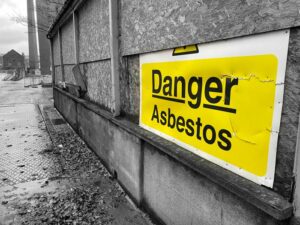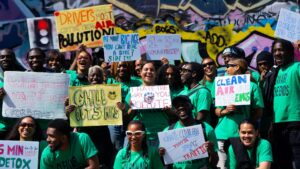It’s time to address Southeast Asia’s Transboundary Haze
Written for Air Quality News by Heng Kiah Chun and Rattanasiri Kittikongnapang from Greenpeace Southeast Asia.
As soon as February kicks in, many Thais anticipate the return of the dreaded haze that chokes Northern Thailand and some parts of the Lower Mekong region for many months, affecting millions of people who have been forced to endure toxic haze pollution for decades.
Thailand’s haze problem is the result of government-backed industrial-scale cultivation of maize by big corporations for animal feed. It’s a policy that solely benefits the meat industry to expand its business and influence, with little accountability, in the sub-Mekong region.
With an El Niño forecast, one can only imagine what the 2024 haze outlook will be for the rest of Southeast Asia which experiences alarming air pollution primarily due to forest fires.
Indonesia and Malaysia are notorious for clearing their peatlands for palm oil cultivation. Land clearing for plantations causes peatlands to become dry and vulnerable to fires. With deforestation and drainage, the water table is lowered, preventing further carbon intake. Once exposed to the air, peat starts to decompose. With dried-out peat comes the risk of forest fires, which creates more haze. Haze pollution has resulted in a pattern of extensive social, environmental, and economic harm. Unfortunately, countries belonging to the Association of Southeast Asian Nations (ASEAN) – the region’s governing economic and trade bloc – have not stepped up efforts to combat transboundary haze.
Killing us softly
There is growing evidence of mortality effects related to long-term exposure to ambient air pollution, which is currently the greatest external threat to human life expectancy on the planet, comparable to the effects of smoking and more harmful than alcohol use, unsafe water, and transport injuries combined. Breathing haze with an Air Pollutant Index (API) of 500 is equivalent to smoking around 23 cigarettes a day on a regular basis.
Transboundary haze has been a part of life for many in Southeast Asia. Some have grown accustomed to it without being aware of the dangers it poses. But most remember the 2015 episode, when the haze engulfed much of the region, causing schools and businesses to temporarily close and even disrupting flights.
It was only recently known how exposure to smoke from the 2015 forest fires resulted in 100,300 premature deaths in the region. Despite an ASEAN Agreement on Transboundary Haze Pollution (AATHP) being signed in 2002, the 10 member states collectively failed to address the air pollution crisis that again hit the region in 2019. Even with two record-breaking haze incidents, ASEAN continued with their usual ‘diplomacy’ of non-interference.
The Singapore government estimated losses of between $500 million and $1.34 billion from the 2015 haze. For the 2019 haze, the World Bank estimated $5.2 billion in losses for Indonesia, while researchers in Thailand estimated $77 million in losses for Bangkok alone. Despite these economic impacts, no drastic measures were taken.
ASEAN also needs to consider the unknown effects and unforeseen harms that haze pollution will continue to impact people in the region in the context of COVID-19. The pandemic has massively depleted governments’ resources and will continue to place immense pressure on healthcare systems in the foreseeable future. A 2021 study has identified links between emissions from forest and peatland fires (PM2.5, carbon monoxide, and ozone) with increases in COVID-19 infections and deaths.
There’s a company behind every great smog
With the constant threat of transboundary haze, it’s time we pin down who causes it.
According to Indonesia’s Environment and Forestry Ministry, the 2019 forest fires burned 857,756 hectares of peat and mineral soil between January and September, an area that is almost 12 times the size of Singapore. According to Greenpeace Indonesia’s research, a group of Singaporean and Malaysian companies actually own some of the palm oil and pulp and paper plantations that were burned and cleared, contributing to the regional haze. These companies, despite clear violations, have not been sanctioned. The data used in the research was compiled from a variety of public sources by Greenpeace because no data has been made available by the Indonesian government.
Thailand’s Greater Mekong Sub-Region shares a similar story where the fire culprits are even much harder to pin down. Agricultural land in the Mekong Sub-Region is significantly devoted to industrial-scale mono-cropping. With the increasing demand for maize to process into animal feed in the region, maize production has come under the spotlight for causing deforestation due to the burning of land for pre- and post-harvest, ultimately contributing to regional air pollution. Maize cultivation for animal feed was responsible for almost half of the transboundary haze in 2023.
While industrial maize production is largely blamed here, the information about agribusinesses occupying the land is often lacking. Without this information, the Thai government cannot hold corporations accountable for the health and environmental impacts of the haze in their supply chains across the region.
Students hold a protest as the air is filled with thick haze from forest fires in Palangkaraya city, Central Kalimantan.Right to Clean Air
Fed up with repeated government inaction and lack of corporate accountability, ASEAN citizens are now taking matters into their own hands and suing their governments for failing to protect and uphold people’s basic rights to clean air.
Noting how the AATHP continues to be unenforced and lacking in corporate accountability, in 2021, Malaysian civil society filed a pioneering complaint at the Malaysian Human Rights Commission (SUHAKAM) as a proactive countermeasure to address the chronic and persistent haze pollution. The group hopes to empower haze-impacted individuals and communities not only through greater public access to information on the source of haze, but also its effects on their livelihood and the companies who are responsible. The complaint also recommends the strengthening of domestic environmental laws and regulations, as well as strengthening human rights practices within businesses based on the United Nations framework.
In 2022, residents in Northern Thailand filed a lawsuit against the Thai Prime Minister and the National Environment Board (NEB) for failing to step up action on the PM2.5 crisis which got so severe that, in early 2023, Chiang Mai was ranked the World’s Most Polluted City with thousands admitted to local hospitals with severe respiratory problems. Last month, the Chiang Mai Administrative Court released its verdict and instructed the defendants to enforce the law immediately to develop and introduce inclusive emergency measures to address Northern Thailand’s haze pollution within 90 days.
As Southeast Asia gets back on its feet after COVID-19, it is hoped that ASEAN governments heed their citizen’s plea and work together to eliminate transboundary haze pollution in the region. Accountability is the key area that respective governments should focus on.
Greenpeace Southeast Asia recommends that ASEAN states enact their own domestic Transboundary Haze Pollution Act. The Act was the first concrete step following the ASEAN Agreement on Transboundary Haze Pollution in 2002.
Having their own Transboundary Haze Act can provide legal grounds to institutionalize checks and balances, to ensure that a local company is not contributing to haze locally and abroad.
Greenpeace Southeast Asia demands ASEAN states to:
1. Develop a regional legal framework to hold corporate entities accountable for domestic forest fires due to peatland clearance and agricultural residue burning.
2. Mandate all companies known for clearing out forests to publicly disclose and publish concession maps to be shared across all ASEAN member states to improve transparency in their supply chains.
3. Agree on a standardized air quality indicator to be used in all ASEAN member states to monitor and track air pollution based on a common methodology and act accordingly.
Forest fires and haze pollution are man-made disasters that could have been prevented by governments in the region and many lives could have been spared. Big companies that are responsible for fanning the flames continue to make huge profits at people’s expense. It’s time to address the huge elephant in the room and end the injustice.
















Leave a Reply